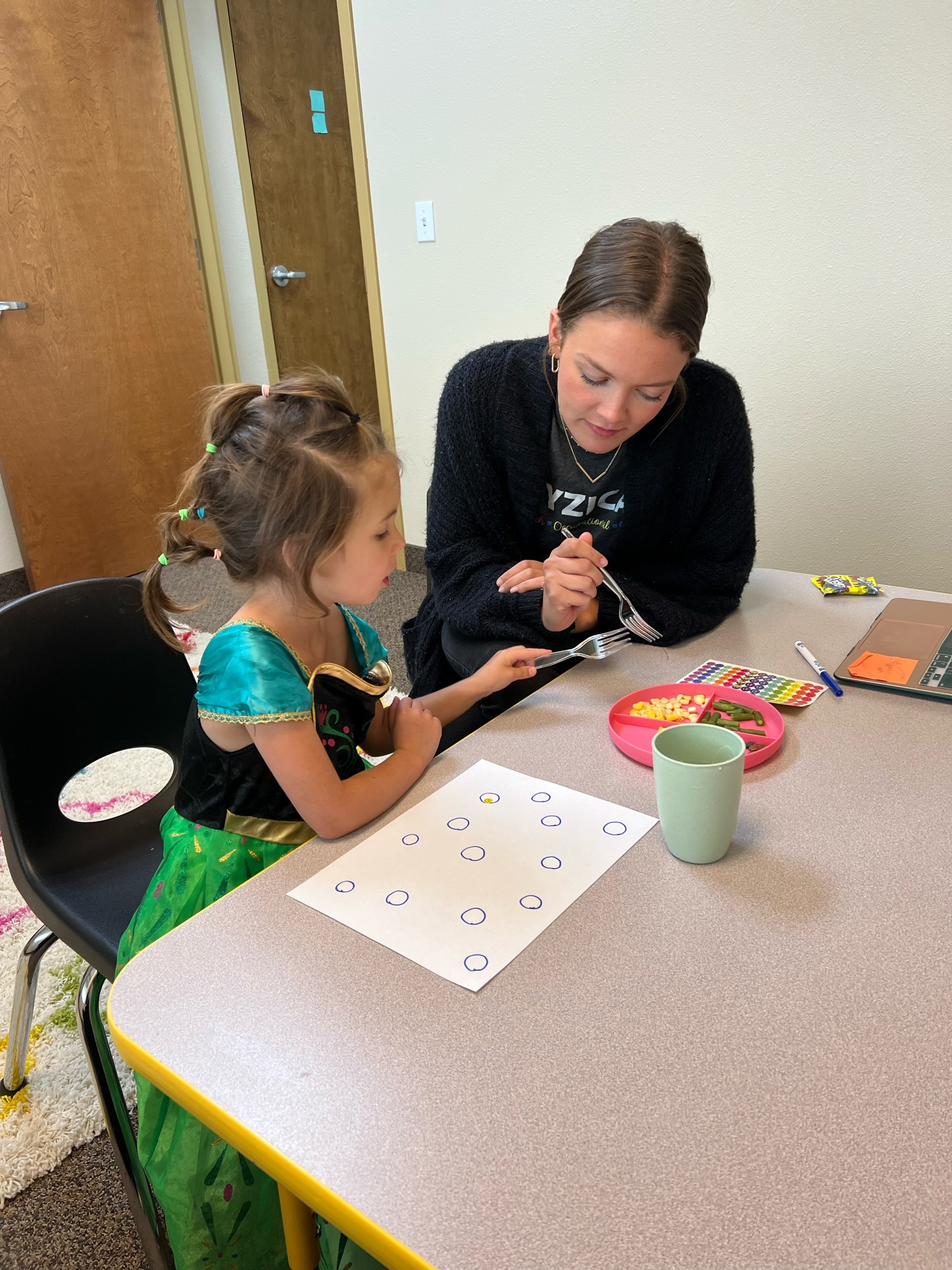Food Therapist Farmingdale: Supporting Favorable Eating Habits
Wiki Article
Navigating the Course to Effective Feeding: Cutting-edge Approaches and Interventions for Efficient Feeding Treatment
Are you having a hard time to locate reliable approaches and interventions for successful feeding therapy? And also, we'll show you the importance of collaborating with family members and caretakers for optimal feeding end results. Get all set to navigate the course to effective feeding!Assessing Feeding Obstacles and Determining Goals
You should start by evaluating your youngster's feeding difficulties and identifying specific objectives for their therapy. This step is critical in establishing an efficient feeding treatment plan. Begin by observing your child's feeding patterns and habits. Search for any hostilities or problems they might have in the direction of certain foods or appearances. Keep in mind of any type of sensory or physical issues that might be influencing their ability to consume. You can after that establish particular objectives for their therapy as soon as you have identified these challenges. These goals ought to be obtainable and realistic, concentrating on boosting your kid's feeding skills and total nutrition. You might set an objective for your child to be able to endure a broader selection of structures or to self-feed with tools. It's vital to interact these objectives with your child's feeding specialist so they can customize the treatment sessions to resolve these particular challenges. By evaluating your child's feeding obstacles and setting objectives, you are taking the initial step towards aiding them establish successful feeding skills.Carrying Out Evidence-Based Approaches for Feeding Therapy
Executing evidence-based strategies for feeding treatment can cause positive end results for kids. You are making sure that the treatments utilized are sustained by scientific research study and have been proven reliable when you integrate these approaches right into your child's therapy strategy. This strategy enhances the possibility of success and assists attend to the specific feeding obstacles your youngster might be experiencing.By complying with evidence-based strategies, you can supply your kid with the best possible treatment and support. These approaches might include utilizing a variety of sensory experiences throughout nourishments, such as exploring various textures and tastes, to motivate acceptance of brand-new foods. Furthermore, carrying out behavior alteration methods can help attend to particular consuming practices and promote healthier consuming patterns.
One more important aspect of evidence-based feeding treatment is involving the household in the therapy procedure. By supplying education and assistance to caretakers and parents, they can play an active duty in helping their kid overcome feeding difficulties. This joint technique enhances the efficiency of therapy and promotes long lasting favorable changes in your kid's eating habits.

Addressing Sensory Processing Issues in Feeding Treatment
Dealing with sensory processing problems in feeding treatment can be difficult, however it is crucial for advertising a favorable consuming experience for children. When you experience a kid with sensory processing troubles throughout mealtime, it is crucial to comprehend that their reactions to specific appearances, tastes, scents, and even audios are not willful (food therapist farmingdale). By acknowledging and resolving these issues, you can help create an encouraging atmosphere that urges healthy and balanced eating behaviors
One efficient approach is to introduce brand-new foods slowly. Begin with small, non-threatening sections and progressively raise the amount with time. This approach permits the kid to come to be aware of the food and its sensory buildings at their very own rate. Furthermore, using a range of textures and flavors can help desensitize their sensory system and increase their food preferences.
Involving the child in sensory play tasks can additionally be valuable. Encourage them to discover various structures, such as squishing, pressing, or touching different food things. This can assist stabilize sensory input and lower aversions to specific structures.
An additional vital facet is giving a structured and calm eating environment. Decrease distractions, such as loud sounds or brilliant lights, which can bewilder their senses and impede their capability to concentrate on eating. Creating a predictable regular and making use of aesthetic schedules can additionally help the youngster feel even more secure and in control during weblink mealtime.

Using Assistive Innovation and Adaptive Equipment
Using assistive innovation and adaptive devices can considerably improve the feeding experience for youngsters with sensory handling problems. When you have difficulty with sensory handling, mealtime can be difficult and frustrating. But with the right devices, you can make it a much more successful and delightful experience.One option is making use of specialized plates and tools created to accommodate your demands. These tools may have textured deals with or a bigger grip, making them less complicated to manipulate and hold. Plates with split areas can assist separate various foods and avoid them from touching, which can be a resource of pain for some kids.
Along with specialized plates and tools, there are likewise assistive gadgets that can be used during feeding. As an example, a heavy vest or lap pad can supply deep pressure input, aiding to calm and manage your sensory system. A vibrating tooth brush or chewable jewelry can offer oral sensory excitement, making the act of consuming more satisfying.
Innovation can also contribute in improving the feeding experience. There are gadgets and applications offered that can provide auditory or aesthetic cues, such as timers or triggers, to help you stay concentrated and arranged throughout mealtime.
Working Together With Families and Caretakers for Effective Feeding Results
When collaborating with caretakers and families, you can collaborate to develop a nurturing and encouraging setting for successful feeding end results. By involving households and caretakers in the feeding treatment process, you can gain important understandings into the child's feeding practices, difficulties, and preferences. feeding therapy farmingdale ny. This cooperation enables for an all natural approach to feeding treatment, addressing not only the physical facets yet likewise the emotional and psychological variables that might affect a youngster's feeding capabilitiesOne key aspect of collaborating with caretakers and families is giving education and learning and training. By equipping them with understanding and abilities, they can proactively join the feeding therapy procedure and support the child's progress beyond therapy sessions. This can include showing them feeding methods, methods for handling nourishment actions, and comprehending the importance of consistency and regimen in establishing healthy consuming explanation routines.
Moreover, entailing families and caretakers in setting goal and therapy preparation makes certain that their viewpoints and objectives for the child are thought about. By interacting, you can create possible and practical goals that align with the family's values and top priorities - food aversion therapy long island. This joint technique fosters a feeling of ownership and empowerment, producing a solid foundation for successful feeding results
In addition, routine and open communication with families and caretakers is essential for effective partnership. By maintaining continuous dialogue, you can deal with worries, provide assistance, and make required changes to the feeding treatment plan as required. This communication additionally enables sharing progression updates, celebrating success, and identifying any type of obstacles or obstacles that may emerge.

Final Thought
Congratulations on completing this article on browsing the path to successful feeding! You have actually discovered various methods and treatments for effective feeding treatment, such as analyzing difficulties, carrying out evidence-based methods, dealing with sensory handling concerns, and making use of assistive modern technology. By teaming up with caregivers and family members, you can make certain effective feeding outcomes. Keep in mind to constantly remain cutting-edge and proactive in your technique to feeding therapy. Keep up the magnum opus!It's essential to connect these objectives with your kid's feeding specialist so they can customize the therapy sessions to deal with these particular challenges.Executing evidence-based approaches for feeding treatment can lead to favorable outcomes for kids.Dealing with sensory handling problems in feeding treatment can be tough, but it is crucial for advertising a positive consuming experience for children. By entailing households and caregivers in the feeding treatment process, you can get important insights into the youngster's feeding choices, difficulties, and routines. By outfitting them with expertise and skills, they great site can actively take part in the feeding treatment process and sustain the child's development outside of therapy sessions.
Report this wiki page